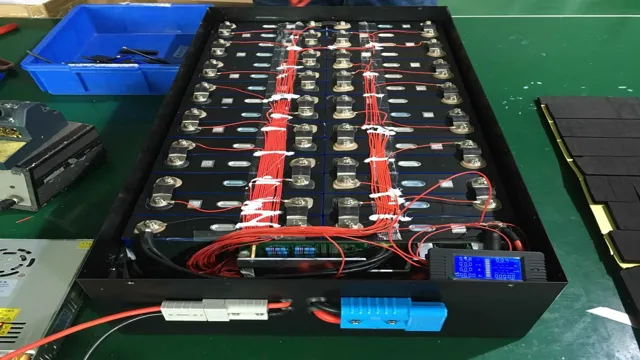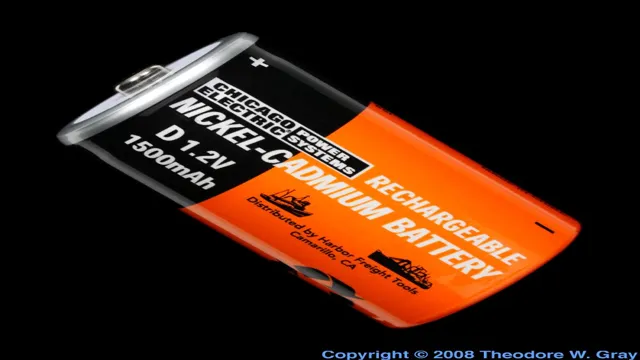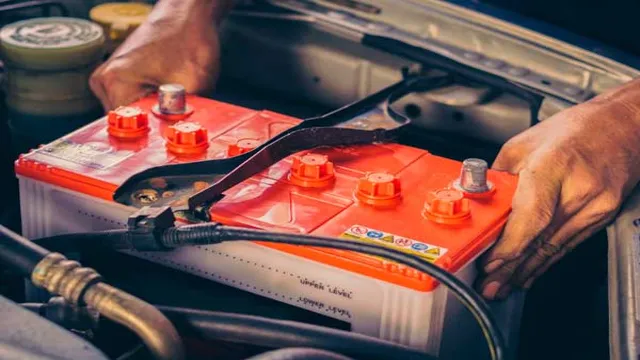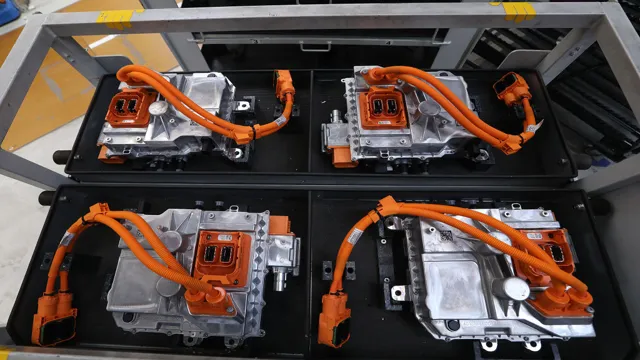Revolutionizing the Future: A Roundup of Latest Electric Car Battery Cell Research
Have you ever wondered what makes electric cars tick? Aside from the sleek design and impressive range, it’s all about the battery cells. These cells are crucial components that determine the efficiency, performance, and longevity of electric vehicles. That’s why researchers all over the world are constantly exploring new ways to improve and innovate these tiny but mighty powerhouses.
In this electric car battery cell research roundup, we’ll take a closer look at the latest breakthroughs and developments in this exciting field. From solid-state technology to silicon anodes, these advancements are set to revolutionize the electric car industry and pave the way for a greener, more sustainable future.
Top Trends in Battery Cell Research
As electric vehicles continue to gain popularity, battery cell research remains a top priority for scientists and engineers alike. And there are some exciting trends emerging in the field. For starters, solid-state batteries are becoming an increasingly popular option.
These batteries use a solid electrolyte instead of a liquid one, which can result in a longer lifespan and improved safety. Another trend to watch is the use of lithium-sulfur batteries, which have the potential to store more energy than traditional lithium-ion batteries. And finally, researchers are exploring the possibility of using sodium-ion batteries, which could be a more cost-effective option thanks to the abundance of sodium compared to lithium.
It’s clear that there’s a lot of potential for innovation in battery cell research, which means that electric car owners can look forward to even better performance and longer-lasting power in the coming years.
1. Solid-State Batteries Show Promise
Solid-state batteries are gaining interest and traction in the battery cell research space. These batteries are a promising alternative to traditional lithium-ion batteries due to their higher energy density, longer lifespan, and improved safety features. The technology behind solid-state batteries uses a solid electrolyte instead of a liquid one, resulting in a more stable and safe battery.
Additionally, these batteries show a higher tolerance to higher temperatures, which is crucial for electric vehicle applications. As researchers continue to develop and optimize solid-state battery technology, we can expect to see more widespread adoption in the coming years. Overall, solid-state batteries have the potential to revolutionize the battery industry and drive continued advancements in electric vehicle performance.

2. Lithium-Ion Battery Innovations
As the demand for renewable energy continues to rise, the need for improved battery technology has become increasingly important. Lithium-ion batteries have been the primary source of energy storage for several years, but research into improving cell design has become a top priority. One of the top trends in battery cell research is the development of solid-state lithium-ion batteries.
Traditional lithium-ion batteries use a liquid electrolyte that can cause safety issues if the battery is damaged, which can lead to short-circuits and even explosions. Solid-state batteries use a solid electrolyte, which is not only safer but can also improve energy density and cycle life. Another trend is the use of silicon in anodes instead of graphite.
Silicon can store more energy than graphite but has been difficult to use in battery cells due to expansion and contraction during charge and discharge cycles. Researchers are working on ways to mitigate this issue and unlock the potential of silicon anodes. Overall, these innovations have the potential to make lithium-ion batteries safer, more efficient, and more affordable, paving the way for a more sustainable future.
3. Advancements in Battery Management Systems
One of the top trends in battery cell research is the advancement of Battery Management Systems (BMS). BMSs are highly critical components that are responsible for monitoring and controlling the charging and discharging processes of batteries. In recent years, significant progress has been made in the design and implementation of BMSs that can handle high power densities, long-lasting cycles, and intelligent communication protocols.
These advancements have led to more efficient, safer, and reliable battery cells with improved performance, reduced costs, and longer lifespans. Furthermore, with the growing demand for electric vehicles, renewable energy systems, and portable electronics, the development of BMSs is becoming increasingly crucial in achieving optimal energy utilization, end-user satisfaction, and environmental sustainability. Overall, the ongoing research and development of advanced BMSs are expected to revolutionize the battery industry and unlock new opportunities for innovation and growth.
Research Institutes and Their Latest Findings
Electric car battery cell research has been a hot topic in recent years, with various research institutes working tirelessly to develop the most efficient and sustainable option. One of the latest findings comes from the Institute of New Energy and Low-Carbon Technology in China, where scientists have developed a new lithium-ion battery that can charge in just 10 minutes and have a lifespan of 2 million miles.
Meanwhile, researchers at Stanford University have been focused on improving the safety of lithium-ion batteries by studying the formation of dendrites, which can cause short circuits. They have developed a “smart” separator that can detect and prevent dendrite growth, making the batteries safer and more reliable. Additionally, the Joint Center for Energy Storage Research has been investigating the use of solid-state batteries, which could offer higher energy density and improved safety compared to conventional lithium-ion batteries.
These developments in electric car battery cell research hold great promise for the future of sustainable transportation.
1. Stanford University’s All-Solid-State Battery Research
Stanford University’s all-solid-state battery research is an exciting development in the field of energy storage. This cutting-edge research aims to increase the safety and performance of batteries, ultimately making them more efficient. All-solid-state batteries are believed to be the next generation of batteries, replacing the traditional liquid electrolyte batteries with solid electrolytes.
This research is particularly important because it is addressing some of the primary challenges of batteries, such as insufficient energy density and short lifespan. By using lithium-ion conductive ceramics, the team at Stanford is creating a solid electrolyte that is less likely to short circuit and is capable of storing more energy in a smaller space. The research team hopes that their work will not only improve existing technologies but also pave the way for the development of new applications that require high-performance, reliable, and safe energy storage.
Stanford’s all-solid-state battery research could revolutionize the way we store energy, reducing our reliance on fossil fuels and enabling the widespread adoption of green technologies.
2. MIT’s Flow Battery Tech Breakthrough
MIT’s flow battery technology breakthrough has been making headlines recently for its potential to revolutionize energy storage. Researchers at the prestigious institute have developed a flow battery system that uses carbon nanotubes instead of traditional metals, resulting in a cheaper and more durable battery. This breakthrough could be a game-changer for renewable energy sources such as wind and solar power, as it addresses the challenge of storing energy for prolonged periods.
The technology also has the potential to be used in electric vehicles, making them not only greener but also more efficient. With its promising results, MIT’s flow battery technology is definitely one to watch in the coming years.
3. University of California’s Multi-Ion Battery Chemistry
The University of California has made a breakthrough in battery technology by creating a multi-ion battery chemistry that could revolutionize the energy storage industry. The new technology replaces traditional lithium-ion batteries with a mixture of various ions, including lithium, sodium, and potassium. The result is a more efficient and longer-lasting battery that can store more energy while taking up less space.
This innovation has the potential to transform the way we power our homes, cars, and other devices, making them more environmentally friendly and cost-effective. Imagine a battery that can power your electric car for hundreds of miles on a single charge or store enough energy to power your home for days during a power outage. The possibilities are endless, and it all started with the University of California’s groundbreaking research.
Government Incentives Driving Research
Electric car battery cell research is being driven by government incentives around the world. Many countries are implementing policies to promote the use of electric vehicles to reduce carbon emissions and combat climate change. As a result, there is a growing demand for better and more efficient battery technology.
Governments are offering financial support and tax incentives to attract investment in research and development of electric car battery cell technology. This push is driving significant progress in the field, leading to advancements in cell chemistry, manufacturing processes, and overall battery performance. This research is crucial to the development of more affordable and reliable electric vehicles.
As a result, this has led to a surge in research activities and collaborations between car manufacturers, battery manufacturers, and academic researchers. Electric car battery cell research is paving the way for a greener future, and the governments’ support is instrumental in realizing it.
1. Federal and State Funding for Battery Tech R&D
The government is playing a crucial role in driving the research and development of battery technology. Both federal and state funding have been allocated to support the growth of battery technology, with incentives aimed at encouraging innovation in this field. These funding programs have made it possible for researchers to explore new and innovative ideas that can be used to improve the performance of batteries in various applications.
Moreover, the funding has allowed researchers to develop new materials, improve battery life, and enhance the efficiency of existing battery technology. With the support of government incentives, the future of battery technology looks brighter than ever, and we can expect to see significant advancements in this field in the years to come.
2. Tax Credits for Electric Vehicle Battery Production
Electric Vehicle Tax Credit The government is offering tax credits for electric vehicle battery production, which is incentivizing companies to invest in research and development. This has led to improvements in battery technology, making electric vehicles more efficient and affordable for consumers. The tax incentives have also spurred companies to build new manufacturing facilities, which are creating jobs and boosting the economy.
Overall, these government incentives are driving innovation in the electric vehicle market and making sustainable transportation a more viable option for people around the world. So, if you’re thinking about investing in an electric vehicle, now is a great time to take advantage of these tax credits and help support the growth of this exciting industry.
Challenges and Opportunities for the Future
Electric car battery cell research has become a hot topic in recent years as the demand for eco-friendly transportation solutions continues to rise. One of the major challenges facing researchers is the development of batteries that can provide longer driving ranges without sacrificing performance or safety. Many companies are investing in new materials and manufacturing processes to improve the efficiency and durability of battery cells.
Another key challenge is reducing the cost of production, making electric vehicles more accessible to a wider range of consumers. At the same time, there are exciting opportunities in the field, with the potential for breakthrough discoveries that could revolutionize battery technology. From new types of cathodes and anodes to innovative charging and recycling solutions, there is a lot of excitement and anticipation around what the future holds for electric car batteries.
With ongoing research and development efforts, we can expect to see significant advancements in the coming years that will help make electric vehicles a more viable and sustainable alternative to traditional gas-powered cars.
1. Scaling Up Battery Cell Production
Battery cell production has become an essential part of our daily lives, enabling us to power our electronic devices reliably and efficiently. However, as the demand for these devices increases, the need to scale up battery cell production becomes even more critical. This process poses significant challenges, such as maintaining high-quality standards while meeting production targets, optimizing cost-efficiency, and ensuring eco-friendliness.
At the same time, there are also opportunities to improve battery cell production by leveraging new technologies like automation, artificial intelligence, and renewable energy sources. By using these innovative methods, we can increase production capacity, reduce costs, and minimize environmental impact. We need to continue to navigate the challenges while exploiting the opportunities that lie ahead as we drive towards a better and greener future.
2. Environmental Concerns with Battery Production
As we continue to rely on battery technology for our devices and renewable energy sources, it’s important to acknowledge the environmental concerns that come with its production. One major challenge is the extraction of materials, such as lithium and cobalt, which can have harmful effects on surrounding ecosystems and communities. Additionally, the energy-intensive process of manufacturing batteries leads to significant carbon emissions.
However, there are also opportunities for the future of battery production to address these concerns. For example, using recycled materials and improving the efficiency of the manufacturing process can significantly reduce environmental impact. With a focus on sustainability and innovation, the battery industry can continue to provide solutions while minimizing its negative effects on the environment.
3. Potential for Battery Recycling and Second-Life Applications
Battery recycling and second-life applications present both challenges and opportunities for the future of sustainable energy. The challenge lies in the complex nature of batteries, which are comprised of a variety of materials that must be separated and processed to be reused effectively. However, the opportunities are vast, as companies like Tesla are already working towards creating closed-loop recycling processes that can recover over 90% of critical materials in spent lithium-ion batteries.
Additionally, second-life applications, such as using retired EV batteries for stationary energy storage, can help to further extend the lifespan of these batteries and reduce overall waste. These applications not only reduce waste but can also provide a more cost-effective way to obtain critical materials for new batteries. As technology and research continue to advance in the battery recycling and second-life spheres, we can hope to see more efficient and sustainable solutions in the future.
Conclusion
After diving into the world of electric car battery cell research, it’s clear that there’s a charge of innovation and excitement in the air. From graphene-based electrodes to solid-state electrolytes, scientists and engineers are working tirelessly to develop the next generation of batteries that will power our electric vehicles. And while there’s still much work to be done, the potential for longer range, faster charging, and more sustainable transportation has never been brighter.
So let’s plug in, rev up, and drive towards a more electrifying future!”
FAQs
What recent developments have been made in electric car battery cell research?
There have been advancements in the fields of solid-state batteries, lithium-ion batteries, and better battery management systems.
How long do electric car batteries typically last?
The lifespan of electric car batteries varies depending on make and model, but generally ranges from 100,000-200,000 miles or 8-10 years.
Are there any new battery technologies that could significantly increase the range of electric cars?
Yes, solid-state batteries and lithium-sulfur batteries are both being researched as potential alternatives to increase electric car range.
How does cold weather affect the performance of electric car batteries?
Cold weather can reduce the range and efficiency of electric car batteries, but there are battery management systems in place to assist with this issue, as well as options for preheating the battery before driving.






